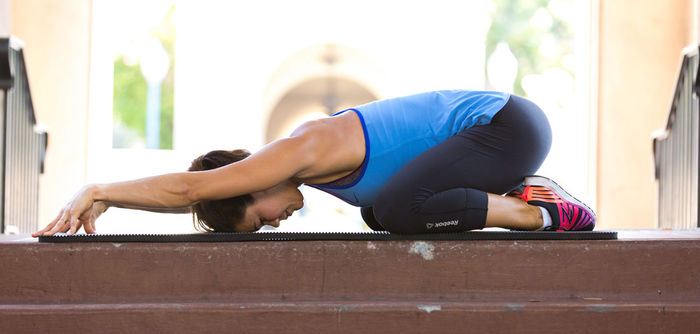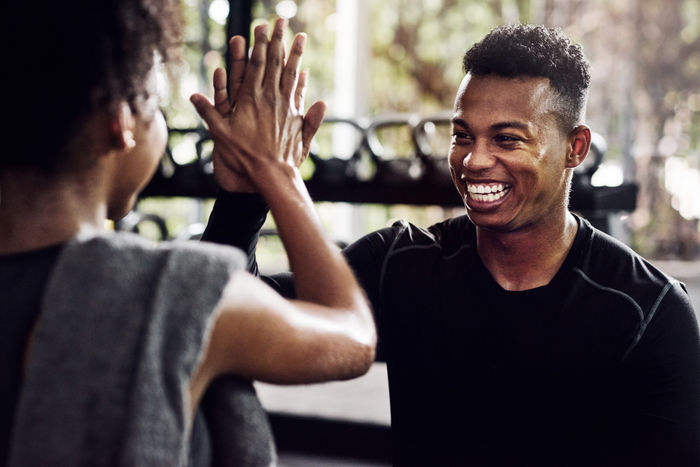Improving aesthetic appearance, losing weight or enhancing athletic performance are three very popular reasons why many people exercise. While we all want the benefits from working out, few people will walk into a gym or health club and tell the staff they have something that needs to be fixed. And yet many of us are walking around with muscle imbalances that are potential causes of injury; that is, unless these imbalances are addressed with a proper exercise program.
Every joint in the body is surrounded by muscles that produce and control movement. If muscles on one side of a joint become too tight from overuse, it could cause the muscles on the other side to become too weak from lack of use. This is called a muscle imbalance. Muscle imbalances can be a potential cause of injury because they can affect the position of the joint at rest and change its path of motion during movement, both of which are potential causes of injury.
If you’re already injured or in pain, it is important to see the appropriate medical professional for a proper diagnosis and course of treatment. However, if you notice that the same parts of your body are always a little too sore after a workout or a day full of physical activity, you might have muscle imbalances. The good news is that the right exercise program can help improve your muscle strength and enhance joint range of motion, both of which are essential for eliminating muscle imbalances.
Here are six things that you should know about muscle imbalances and how they are created. If you find that you do any of these on a regular basis, make sure to change the way you move so you can avoid an uncomfortable injury.
1. Repetitive motions are one of the most common causes of muscle imbalances. When muscles shorten, they produce force. If they are used to generate force repeatedly for the same actions, muscles can become overused and remain in a state of semi-contraction, which can change the position of the joint. Doing the same movements in a work setting or performing the exact same exercises in every workout are two examples of repetitive motions that can be a potential cause of imbalances. If you have a job requiring repetitive motions, try to identify ways that you can make small changes to the movement to avoid imbalances. Also, make sure to change the exercises in your workouts on a regular basis to minimize the risk of developing muscle imbalances.
2. Remaining in a sedentary, seated position for an extended period of time can create muscle imbalances in the hips. Most of us sit when we drive to work and spend most of the working day in a seated position. When you are seated, your hips are flexed, which places the muscles that cause hip flexion in a shortened position. When the hip flexors are shortened, they will change the way the hip joints move. In addition, when the hip flexors are tightened they reduce the activity to the gluteus maximus muscles responsible for extending the hips. This also could be a potential cause of low-back pain. If you work in a job that requires you to be seated through most of the day, look for opportunities to stand up, move around and try to keep your joints mobile and your hip muscles from becoming too tight.
3. How you position yourself while you drive can have a lasting effect on your body. Take a look at how you position your hips and legs while you drive. Keeping one leg bent back or slouching while driving could cause the resting length of your muscles to change, particularly if you’re in the car for extended periods of time. Pay attention to how you sit and try to keep your body in a neutral position. If you’re taking a long car trip, take the opportunity to get out, move around and stretch for a bit during gas and rest stops before hopping back behind the wheel. (This will also help you to wake up and stay alert, which is important for safety.)
4. Performing exercises in only a single plane of motion can be a cause of muscle imbalances. The body is designed to move through multiple planes of motion and in many directions, however many popular exercises move the body through only a single plane of motion. Biceps curls, lat pulldowns, seated rows, crunches and squats are all examples of exercises that are restricted to a limited, linear path of motion. Doing too many exercises that are restricted to a limited path of motion could possibly lead to muscle imbalances. To reduce the risk of developing muscle imbalances make sure that your exercise program includes equal amounts of movements like pushing, pulling, rotating as well as moving sideways and in rotational directions. Understanding how to move in a multi-planar environment can help reduce the risk of imbalances.
5. Maintaining a poor posture can result in muscle imbalances of the upper body, specifically the shoulders and upper back. If your parents told you to “stop slouching” or to “sit up straight,” they were definitely on to something. Posture is the resting position of the body, and poor posture can lead to faulty, inefficient movement patterns that increase the risk of injury. For example, allowing your body to roll forward in a slouched position can cause shortness in the muscles of the shoulders, which creates unnecessary length in the muscles of the upper back. Using a computer keyboard or constantly banging out messages and status updates on a phone can also encourage this slouched position. If this sounds familiar, exercises for core stability or performing pulling movements with your hands in a neutral position can help you stand taller (which also helps you to look slimmer without dropping any weight).
6. Wearing shoes with an elevated heel can create muscle imbalances. Frequently wearing shoes that elevate your heels higher than your toes could put you at risk for developing a number of muscle imbalances in your feet, lower legs, hips and shoulders. When your heels are in an elevated position, it can change the position of your knees. This, in turn, changes the position of your thigh bones, which, subsequently, changes the position of your spine and shoulders. Elevated heels can also cause extreme tightness in the calves and the muscles responsible for pointing the feet. If you’re a runner or dancer and you wear elevated heels on a regular basis, it’s important to address any flexibility issues in calves before they develop into potential injury-causing muscle imbalances.
When your car has a tendency to pull to one side, it’s probably out of alignment and you need to see a mechanic. Likewise, if you experience the same injuries over and over, or you notice a lingering soreness that doesn’t go away, it could mean that you have muscle imbalances that are affecting how your joints move. An ACE-certified personal trainer has the skill set to help identify any muscle imbalances that can be addressed with an appropriate exercise program to improve joint stability mobility and enhance overall movement efficiency. To find an ACE Certified Professional in your area, click here.




 by
by 









 by
by